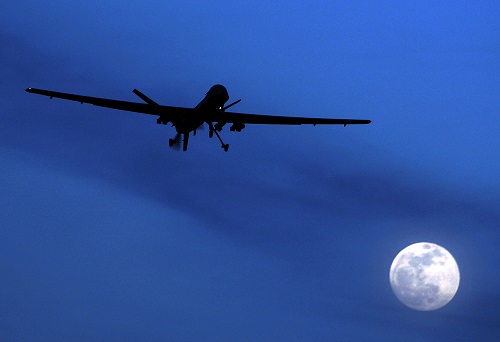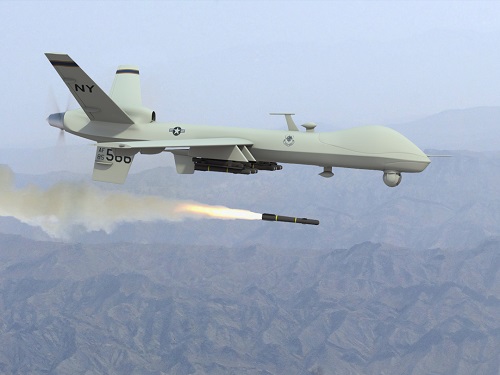The latest reports indicate that data extracted from NSA surveillance programs are used to carry out drone strikes, sometimes killing the wrong victim. Information revealing these grizzly details emerged from an interview carried out by The Intercept with an anonymous former drone operator of the military’s Joint Special Operations Command (JSOC).
As soon as the US military and CIA identify the target using the NSA’s phone-tracking capabilities and metadata analysis, a drone air-strike is launched; however, the identity is never confirmed on the ground. And while the program has effectively dispatched many terrorists, innocent people have absolutely been killed, he declares.

“Once the bomb lands or a night raid happens, you know that phone is there,” says the former JSOC operator. “But we don’t know who’s behind it, who’s holding it. It’s of course assumed that the phone belongs to a human being who is nefarious and considered an 'unlawful enemy combatant.'” A problem with this approach, he explains, is that targets unaware of the NSA’s geolocating SIM-tracking, lend their mobile phones to family members and children. High-ranking terrorists aware of this practice use as many as 16 SIM cards to thwart the intelligence agency’s tactics, and swap cards regularly to lessen JSOC’s accuracy.
Technology behind target identification
The NSA identifies targets through a variety of means. The first method, dubbed GILGAMESH, is responsible for the bulk of metadata collecting. It equips aircrafts and drones with “virtual base-tower transceivers,” that act as artificial phone towers, overwriting local towers. Once the target’s phone latches to the transceiver, the military can track the phone up to 30 feet from its actual location and provide real-time data to drone operators.

JSOC typically requires two sources of intelligence before a strike is green-lit, but more often than not, both of these sources are NSA-supplied and lack the actual human intelligence provided by field operatives, especially in countries do not allow US ground operations.
SHENANIGANS is the second system employed by JSOC for information gathering. The operations uses a “pod on aircraft” that vacuums up data transmitted by any wireless technologies nearby: wireless routes, computers, smartphones, etc.
The president’s opinion
Despite the operator’s claims, the Obama administration insists that terrorists are killed with high precision. The president iterated during his speech at the National Defense University last May that a high degree of certainty is employed when target selection, ““by narrowly targeting our action against those who want to kill us and not the people they hide among, we are choosing the course of action least likely to result in the loss of innocent life.” Yet the increased reliance on phone tracking is contrary to this claim.
When speaking about his former colleague, the JSOC operator says “people get hung up that there’s a targeted list of people, it’s really like we’re targeting a cell phone. We’re not going after people — we’re going after their phones, in the hopes that the person on the other end of that missile is the bad guy.” His testimony of JSOC mission policies echo information revealed in the NSA documents leaked by Edward Snowden along with the criticism made by former drone sensor operator with the U.S. Air Force, Brandon Bryant.
Advertisement
Learn more about Electronic Products Magazine





